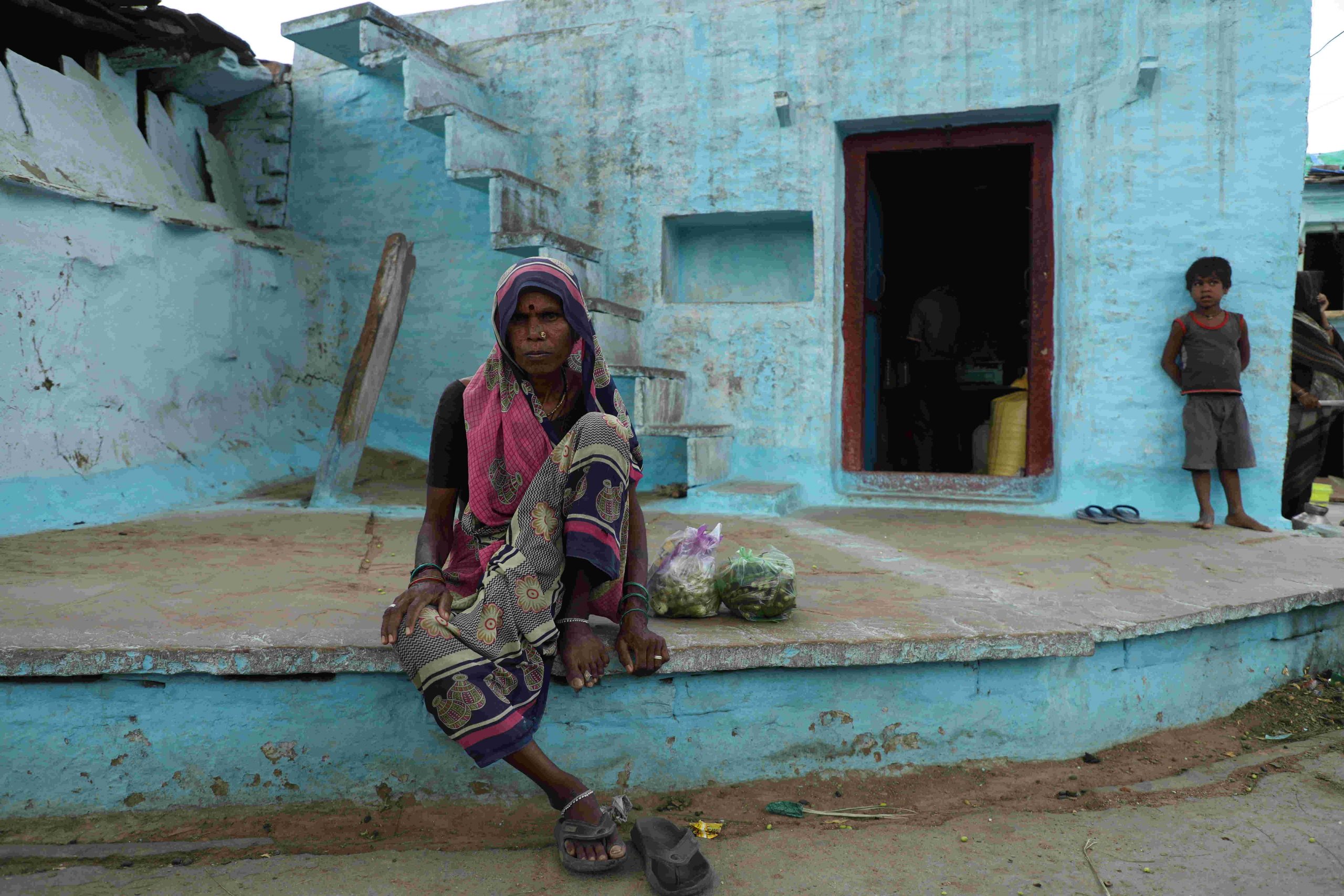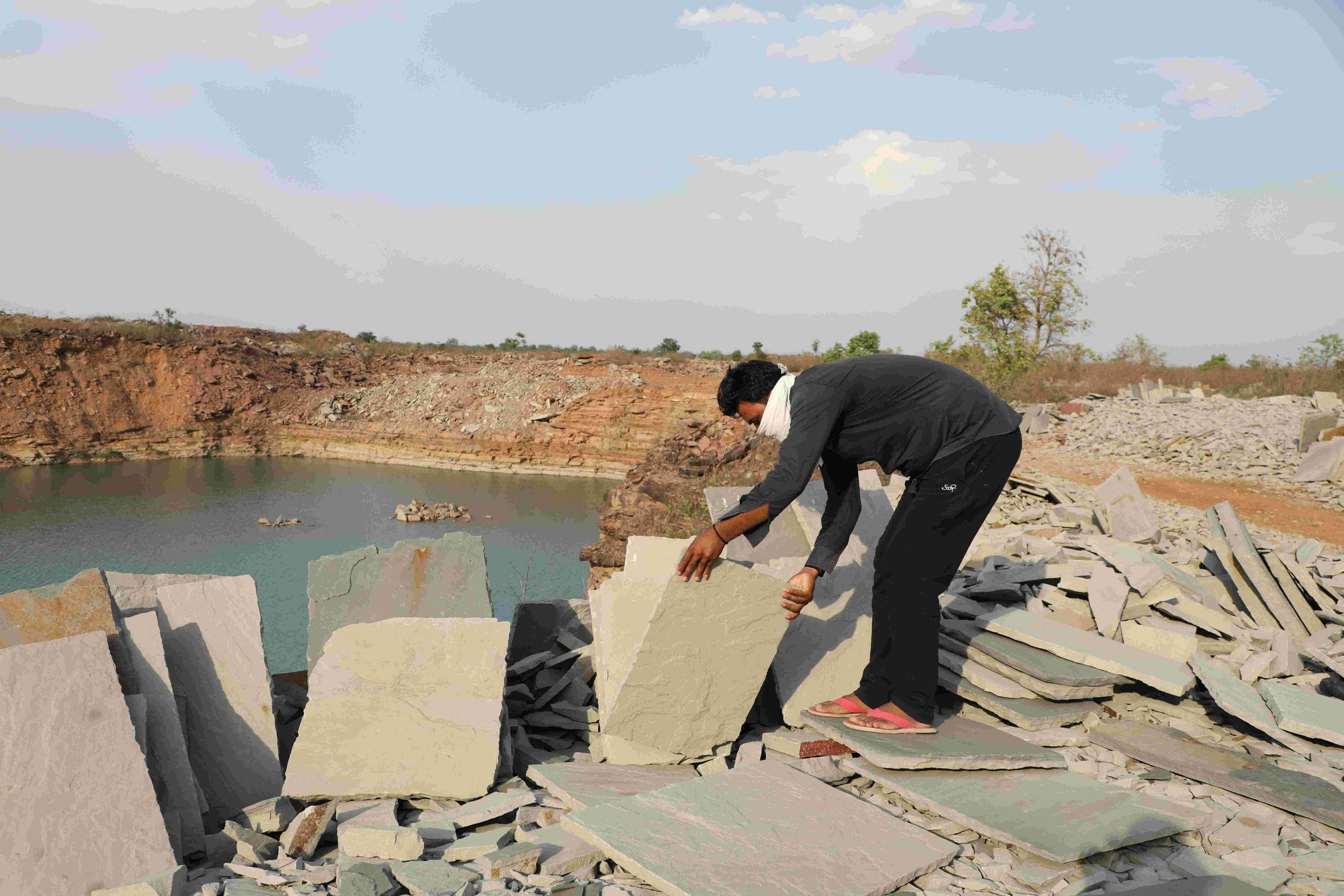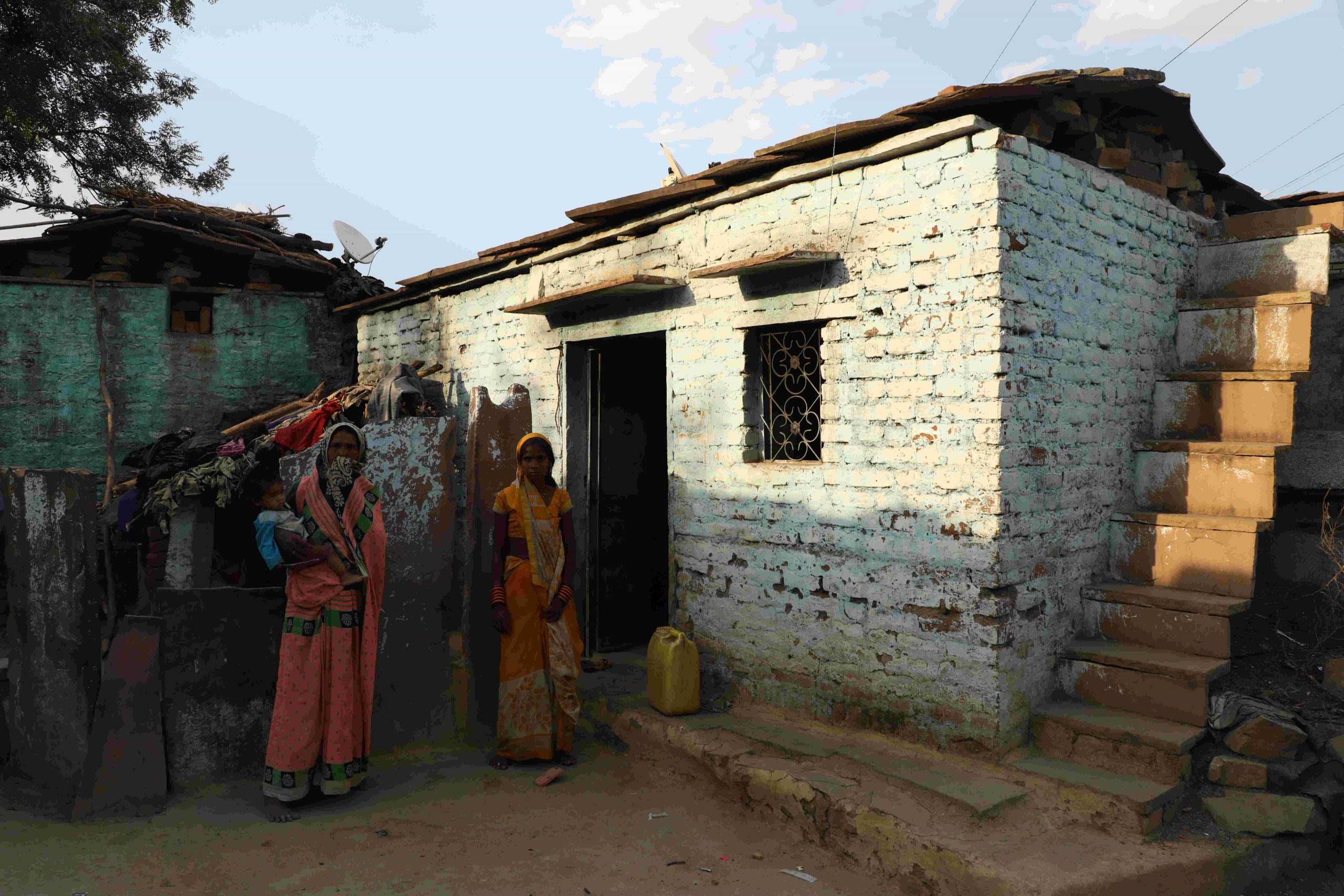The inside story of people migrating from Bundelkhand: The closure of stone mines has rendered people jobless
In the Lalitpur district of Bundelkhand, many people, especially close to 75,000 people from the Saharia tribe, were dependent on the stone mines in the region for jobs. They started migrating after the mines shut. They are back because of the lockdown, and now have no jobs

Madaun (Lalitpur, Bundelkhand)
Raina Saharia, 40, a resident of Madaun village in Lalitpur district of Bundelkhand, is one of the thousands of migrants who somehow managed to return to their villages amid the nationwide lockdown. Raina had, for the very first time, migrated from her village, along with her two boys, to earn. But they faced many problems because of the lockdown and had to return. But they are not happy to be home. Raina is not as worried about the coronavirus pandemic as she is about running her household because where she lives, there are no job opportunities.
Raina lives in the Madaun village in Birdha block of Lalitpur district in Bundelkhand, about 600 kms away from Delhi. This drought-affected area of Lalitpur is one of the most backward areas of Bundelkhand. Because of the rocky terrain, very little or no cultivation takes place. The problem of water remains throughout the year. Despite all these issues, Raina, and many like her, never left their villages to earn money. But everything changed about two years back.
Raina’s village falls in the periphery of the Mahavir Wildlife Sanctuary. After the National Green Tribunal banned mining activities in the region, 62 stone mines in and around Madaun were shut down. This rendered thousands of people like Raina, who used to work at these mines, jobless.

“We used to work at the quarry near the village and never went out to earn. I migrated for the first time and suffered because of the lockdown. Now I am wondering what will I do here. It’s been 20 days that I have returned to the village. For 10 days I was quarantined at a school. I haven’t found any work. I don’t know what will happen next,” said Raina.
Radha runs a small general store close to where Raina lives. “The closure of the mines has affected us badly,” she said. “Earlier, we used to earn Rs 700-800 daily. But now we barely earn Rs 50-100. Who will buy the goods? Most of the people have migrated for work. A few have managed to return. Some even walked down. All are unemployed now,” she added.
Naveen Kumar Das, the district mineral officer of Lalitpur, said: “In 2017-18, 65 mines were closed in the Birdha block as they did not have the environmental clearances. The area falls under the Mahavir Wildlife Sanctuary.” As per the guidelines of the Ministry of Environment, Forest and Climate Change, mining cannot be done within a radius of 10 kms of the sanctuary.
Many people from the Saharia tribe live in this region of Uttar Pradesh. Around 75,000 Saharia tribals live in Lalitpur and most of them are landless or have very little land. They can’t sustain on these lands. Most of those from the Saharia tribe used to cut stones and sell wood from the jungle. These backward and poor Saharias have been the most affected by the closure of the mines.

“Around 20,000 Saharia tribals live in and around the sanctuary. We have to struggle for food, wages and education. We do not get any help from the government, except for the ration card,” said Bhagauti, who was sitting on the parapet of a wall. “Those who have land in their name could not repay the loan that they had taken from the bank. There were a few who were forgiven, the rest became defaulters. From where do we repay if there is no employment? Therefore, the closure of the mine has led to starvation among thousands,” he added.
In most parts of the country, stones from Bundelkhand are used in construction activities. In the Lalitpur district too different kind of stones, like the sandstone, granite, khanda stone and sand morrum are mined on a large-scale. This is the chief source of revenue for the district, and these mines employ millions of people. As per the Department of Minerals, mining activity brings Lalitpur a revenue of about Rs 20 crore annually.
According to Dinesh Sharma, the president of the Patthar Mazdur Evam Vyapari Sangh, a local organization, “Mining activities are going on in Lalitpur since the Gupta period (seventh century). The stone here is acid-proof. It does not erode for thousands of years. This stone is used in temples and forts and is a preferred choice of many for their homes. It is exported to many countries, like China. Mining is also a source of livelihood for people here.
He added: “Nearly 40-60,000 labourers from dozens of villages, including Madaun, Kapasi, Dhaura, Balbehat Hardari, Shivpura Dogaria, Dudhai, Kalapahar, Purdhankuan, Madanpur, Deogarh Brahmapura, were working in the mines in the Dhaura region that were closed two years ago. More than 1.5 lakh families were employed here. If we take into consideration the labourers who used to cut stones, clear soil and the loading, the number would cross a million. You stopped everything in one stroke.”

As per the Patthar Mazdur Evam Vyapari Sangh, in the Dhaura region, no machines or explosives were used. The labourers were doing all this work. Also, they weren’t digging too deep.
Sharma said: “Although the Deogarh Sanctuary was marked in 1977, the forest department could not fix its boundary. The Supreme Court guidelines say that mining can’t take place in the one-kilometer periphery of the sanctuary. But here, mines as far as 15 kilometres away have been closed down. The labour force from the area began to migrate for the first time two years ago when they started getting the same salaries in the cities. On an average, a labourer earned Rs 300-500 a day, but today he is in such a deplorable condition because he has no means of employment.”
As per the union, the labourers were getting Rs 30 per cubic for stone cutting and, on an average, a labourer cuts 10 to 20 stones, thereby earning Rs 300-500.
Baboo Raja Yadav, who used to deal with 50-60 labourers, has himself been unemployed for two years. He said: “For some time, I had managed with my savings. Then I borrowed some. But eventually, I had to go to another city to work. If the government wants to stop all this, it should provide an alternate source of employment here.”
Throughout Bundelkhand, including Lalitpur, the government’s MGNREGA (Mahatma Gandhi National Rural Employment Guarantee Act_ scheme was the lone source of employment. But in the last two years, it had suffered major setbacks that had forced people to leave home.

“We don’t get any MGNREGA jobs. The powerful people in the village take them away from us,” said Mangu from Madaun village in Lalitpur. “If we do not get jobs, we will die. We are poor people. We can’t do any other work. We are not educated.”
The words of Mangu also resonate with the elderly Uddham Singh. He said: “The entire village was desolate for the past two years as everyone had to go out to find some livelihood. Many of the boys of our locality are still stranded outside. Many of us are now forced to borrow money in order to eat.”
As per the district mining department, there are 22 granite mines in Lalitpur. There are 10 sandstone, 27 boulders and three mines of morrum.
The district mining officer, Naveen Kumar Das, said: “Mining is necessary but so is the conservation of forest and its voiceless creatures. We have forwarded a new draft to the Ministry of Environment and Forests. Under the new policy of the state government, a granite quarry outside the sanctuary and two areas have been identified for khanda stone, which would be now be leased out so that people can get employment.”
“Thousands of people have come back to the district after the lockdown having lost their jobs and are in a pathetic situation,” said Sharma, the president of the Patthar Mazdur Evam Vyapari Sangh. “How many people would find work under MGNREGA? The government should restore mining for the remaining lease period (about a year). This way, thousands of labourers will get jobs.”
In Uttar Pradesh, the mining department gives out quarries on 10-year leases. In 2011, about 200 such leases were given in the area and their term is to end in 2021.
On our way out, we met Mangu, who was holding his six-month-old child. He asked: “We don’t even get ration. We need jobs. We need wages. What do I feed my son? Stones?”

